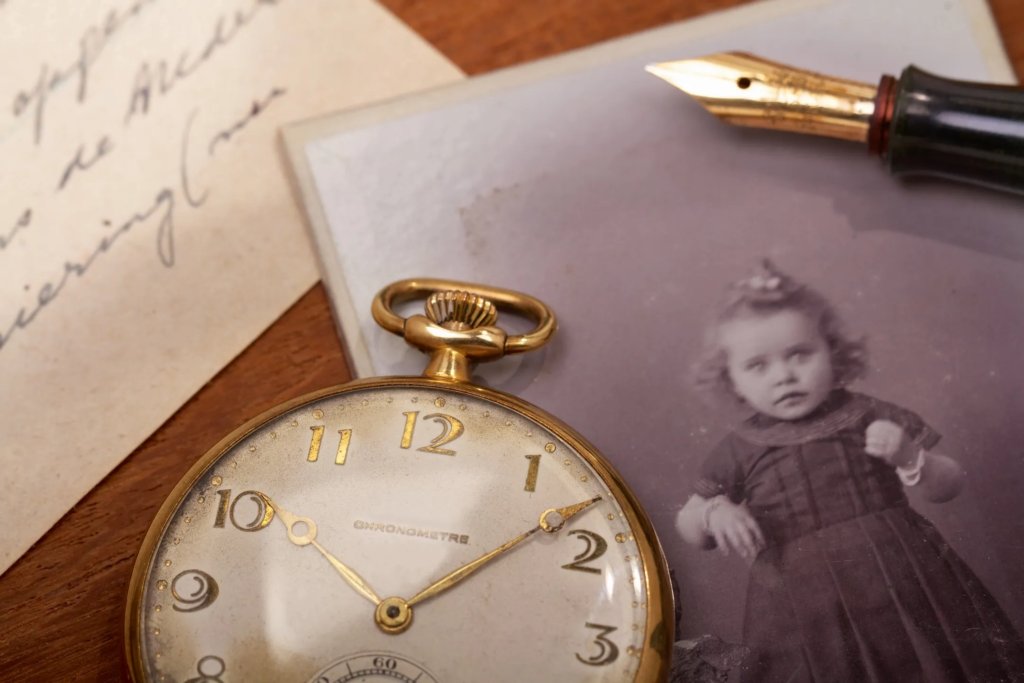
GUIDE: Your meeting with your funeral celebrant
10 minutes to read
Meeting a funeral celebrant can be nerve-wracking.
- How’s this meeting going to go?
- What questions am I going to get asked?
- Do I need to get anything ready?
- Is there anything I should think about beforehand?
And with everything that’s going on, such uncertainty can wreak havoc.
After all, sharing memories and stories of the person you’ve lost should bring a sense of joy and peace, and leave you with an abiding love.
To help you prepare for your meeting with your funeral celebrant, this guide will cover:
- Their ceremony, your way;
- The parts of a ceremony.
- Your meeting options;
- Picking the date and time;
- Who can join you;
- How long the meeting will last.
- About the ceremony;
- About you, family & friends;
- About the person who has died.
- Readings;
- Music;
- Visual tributes;
- Participation of you and others;
- Symbolism, religion, & ritual.
Before we begin…

It’s about you;
It’s about them…
This ceremony – whether it’s a funeral or a memorial – will be a gathering of two halves.
01 / For the person who has died:
- To honour, celebrate, and remember them;
- To mark the end of their life.
02 / For those left behind:
- To comfort, console, and support each other;
- To say farewell to the person they’ve lost.
And how you and your funeral celebrant balance these two halves will be as broad in scope as we’re all unique.
Their ceremony, your way…
You know them best…
From their likes and dislikes to the way they lived and loved…


You know your relationship best…
From their “hello” to the way they said “farewell”…
You know you best…
From the things that give you comfort to your understanding of death and life…

Your funeral celebrant will help you celebrate and honour their life and express your love and loss in a way that feels honest and true to you.
- Not religious? You needn’t include any religion unless you want to.
- A lover of music? You can weave all the best songs through…

There’s no right.
No wrong.
No limitations.
The parts of a ceremony
With no pre-written script to follow, there’s no pre-assigned structure to this ceremony.
You can shake up the order of things.
You can have as much or as little of any element as you fancy.
And the below outline only gives you an idea of a ceremony and its parts.
There’s no actual list of things to choose from…

A ceremony to thank & celebrate…
Opening music
A favourite tune that captures the spirit of the person who has died.
Opening words
A welcome to all those gathered that gives comfort and an idea of what to expect.
Reading #1
Words of love from you to them.
Eulogy
A snapshot into their life that covers their passions and outlook, their impact and legacy.
Music for reflection
A favourite tune that gives the chance for all those gathered to collect their thoughts and reflect on who they’ve lost.
(Often accompanied by photographs.)
Tributes
Reflections from family and friends.
Reading #2
Words of comfort from them to you.
The time to say farewell
A moment of gratitude and affection and farewell.
Reading #3
Words of love from them to you.
Closing words
A conclusion that gives comfort and highlights the best of the person you’ve lost.
Closing music
A favourite tune that captures the way they’d say farewell…
The parts you choose – their order and your reasons for choosing them – will make a ceremony that feels honest and true.
The time you get at the venue for the ceremony will guide how much content you may have.

What’s the difference between a funeral and a memorial ceremony?
A funeral takes place with their coffin. Usually at a cemetery or a crematorium. And is often constrained by a time slot.
A memorial can take place anywhere. It’s less constrained by time. And often has their ashes or their photograph representing them.
Arranging the meeting with your funeral celebrant…

Memories over a cup of tea*…
* or coffee, wine, whatever you fancy…
Being comfortable is key.
Your meeting options
Many funeral celebrants (such as myself) offer:
- Face to face – in a place that’s comfortable for you;
- Online – via platforms such as Zoom, Teams, WhatsApp, Messenger…
- Over the phone;
- By email, although this will be much less personal.
Picking the date & time
Meeting your funeral celebrant can work around you.
Like mine, a funeral celebrants appointment hours tend to end much later in the day than their office hours. And run Monday to Saturday. Some work Sundays, too.
Who can join you?
Anyone you wish – whether for their support or input.
How long will this meeting take?
Roughly 2 hours.
And you are typically advised not to arrange anything too taxing for immediately afterwards.
Some questions you’ll be asked…

It’s a beautiful thing to meet someone through photographs and memories – through love…
Your funeral celebrant wants to meet who you’ve lost through your eyes and help you say farewell.
To do this, they meet with you to gather information.
And while they will have questions for you, it isn’t an interrogation.
It’s two people conversing about someone dear to you.
Only give as much information and detail
as you are comfortable to share.

About the ceremony…
The following will be confirmed:
- Your funeral director;
- Date, time & location of the ceremony;
- Approximate number of attendees;
- Whether the ceremony will be live-streamed;
- Whether Order of Service or other tribute sheets are required;
- Reception details;
- Charity details;
- Dress code.
In addition, you’ll get asked about:
- Readings;
- Music;
- Visual tributes;
- The participation of you and others;
- Whether you or another is writing a tribute or the eulogy;
- Symbolism, religion, and ritual.
About you, family & friends…
As client, the following will be taken from you:
- Your contact details (including phone, email, and home address);
- Your relationship to the person who has died.
To get an idea of the important people in their life, the following will be sought:
- Name and relationship to the person who has died;
- Name and relationship of those participating;
- Name and contact details of those writing a tribute or the eulogy.


About the person who has died…
The following personal details will be sought:
- Name (and known as);
- Relationship status;
- Occupation;
- Date of birth and death;
- Place and cause of death;
- If anyone was with them at the time;
- Their favourite sayings;
- Their pets.
To get an idea of who they were – their spirit and their impact – you may be asked for a combination of the following:
- Memories of their early life, including parents, siblings, and school;
- Stories of their family – such as how they met their partner and what they were like as a parent or grandparent;
- Stories of their friends and social life;
- Illustrations of their character and personality, their beliefs and outlook on life;
- Their hobbies and interests;
- Their achievements.
In addition, from you and those people important in their life, the following may be sought:
- Your favourite memories;
- What you’ll miss the most about them;
- Words you’d use to describe them;
- Their legacy and what they leave behind.
Sounds daunting?
In a comfortable setting, memories and anecdotes easily flow. And before long, enough detail will be gathered that you won’t have noticed the time pass.
Things to consider…

It isn’t the substance,
It’s the feeling…
From an extract of a letter they wrote to the clay model of a horse they made that looks a bit like a goat – bringing their character into the ceremony makes it feel like theirs.
And from the tune you heard them hum to the photograph of them dressed-up silly – filling the ceremony with good memories and laughter makes them feel present.
However you choose to celebrate their life and express your loss is an honest reflection.
Below, you’ll find ideas of things to include.
Only include what feels right – adding what doesn’t dilutes.
Readings
Something that speaks…
Words hold great power. And a well chosen reading can convey a lot of feeling and capture a spark of the person you’ve lost that gets them perfectly.
A reading might be:
- A poem;
- Song lyrics;
- An extract from a book;
- A letter;
- A newspaper clipping or article;
- A recipe;
- Messages received in cards;
- Words written by your loved one;
- And so on… no restrictions!

And it doesn’t need to be about death and sorrow. It can be about life and joy. Be anything you choose…
Music & sound
Something that moves…
Music and sound can be more evocative than words. And the right piece at the right time can help settle the mind, give a chance to reflect, and bring them into the room.
The music and sounds might be:
- A favourite song or artist;
- A TV theme tune;
- A hymn;
- Live music;
- Natural sounds, such as water or birdcall;
- The sound of a steam engine;
- The ringing of bells;
- And so on… no restrictions!

And it doesn’t need to be mournful. It can be joyful. Be anything you choose…
Visual tributes
Something that shows…
Photographs and videos bring a sense of life and remembrance to the ceremony. And well chosen pieces can convey the spirit of the person we’ve gathered to honour.
Visual tributes might be:
- A photograph in a frame;
- A collection of photographs set to music;
- Videos playing on the screens;
- Artwork;
- Paintings;
- Their hobbies and interests;
- And so on… no restrictions!

And they don’t need to be photographs stood at attention. They can be whatever captures them right. Be whatever you choose…
Participation of you & others
Something that includes…
Getting involved can assist with the grieving process – idle hands and all that. And being involved can take many forms.
Only include those who are comfortable to be included.
Participation might be:
- Carrying the coffin;
- Writing the eulogy or a tribute;
- Reading the eulogy or a tribute;
- Reading a reading;
- Leading us in prayer;
- Lighting a candle;
- Giving out flowers to lay on the coffin;
- Supply post-its for mourners to write a message;
- And so on… no restrictions!

And this involvement doesn’t need to be adult only. You can get kids involved, too…
Symbolism, religion, & ritual
Something with meaning…
Symbolism, religion, & ritual are often moments that define the transformational aspect of the ceremony.
They might be:
- Hymns, readings, and scripture;
- Placing items on or around the coffin;
- Lighting candles;
- A dove release;
- A guard of honour;
- The Last Post & Reveille;
- A toast;
- And so on… no restrictions!
Burial:
- Strew earth or petals into the grave;
Cremation:
- Close the curtains;

For questions or further information…
Send me a message…

Meeting.
